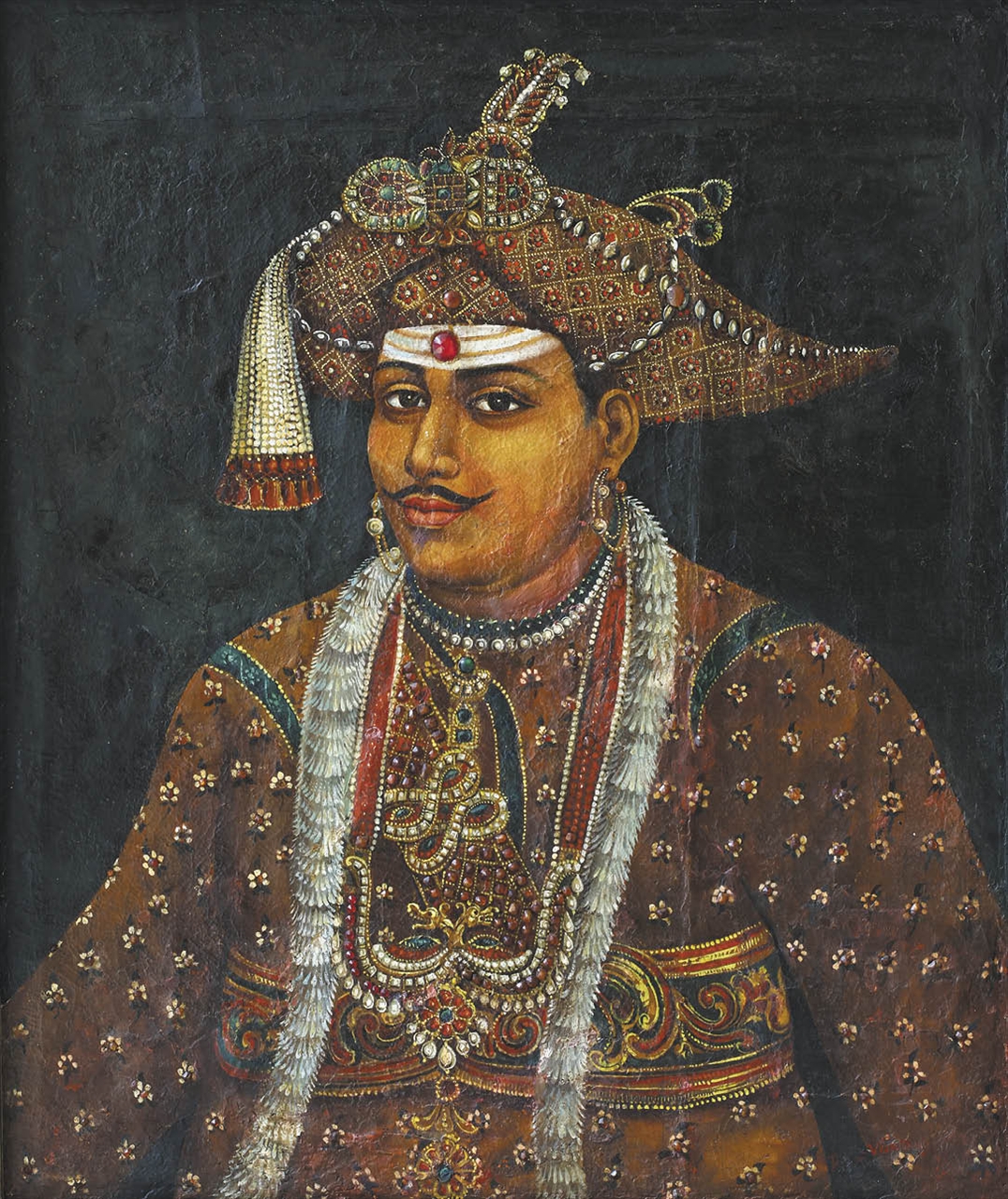![]() Significant Indian Paintings
Significant Indian Paintings
![]() Significant Indian Paintings
RAJA RAVI VARMA (1848 - 1906)
Significant Indian Paintings
RAJA RAVI VARMA (1848 - 1906)
RELATED LOTS
CONTACT US
Catalogue & Viewing
Lot Closed
Accounts & Shipping
Lot Closed
-
Provenance
 Provenance
Provenance
From the collection of a Chennai based industrialist whose family have been very closely known to both Travancore and Cochin Royal House since the 1920’s. Acquired in the 1950’s from the members of the Cochin Royal Family in appreciation of services rendered.
-
Literature
 Literature
Literature

AN IMPORTANT PORTRAIT OF SERFOJI II, 1777-1832, MARATHA KING OF TANJORE.
An attractive and remarkable portrait of India’s greatest scholar-king of Tanjore, by his premier painter, Raja Ravi Varma. While European artists of the period could only transcribe the likeness of Indians, Ravi Varma could portray character as well. In this historic portrait, Serfoji sits confidently, gazing at the viewer, Ravi Varma having captured his look of sensitive intelligence, strength of character and regal bearing, his Shaivite markings on his forehead. His royal robes of red silk are richly worked with decorative flower heads and bordered with green silk. He wears the renowned Tanjore royal jewels adorned with pearls, diamonds, rubies and emeralds; his turban is similarly adorned with a jewelled sarpech and a tassel of pearls and rubies; a garland of jasmine is draped around his neck. In keeping with the early Tanjore style of painting, his robes and turban have been embellished with Gomedhaka, the rich orange-brown Sri Lankan Hessonite variety of the precious stone, Garnet. Other synthetic green and red stones have also been used. The Marathas introduced this style of painting in the sixteenth century, the royal artists combining the existing mural style with the detail, rich texture and elegance of the Mughal miniature. In the early period of this style, diamonds, rubies and other precious stones were used to highlight certain aspects of a painting, such as ornaments, jewellery and dress. In a darkened room they give the impact of a glowing presence. (FOR MORE ON SERFOJI - REFER AUCTION CATALOGUE).
The importance of this painting lies in the fact of its rarity in the portfolio of the artist. Perhaps the only one of its kind done by Raja Ravi Varma throughout his entire career, the portrait has a distinct Tanjore style of usage of stones. The painting has reddish–brown “Gomed” stones along with other red and green stones which reflect light hence giving an aura of divinity to the protagonist of the painting. It makes for a very interesting study of experimental side of Ravi Varma where he has used the Tanjore idiom on canvas instead of board as is the tradition.
The only formal training in art that Ravi Varma received was from his uncle Raja Varma who interned under Alaigiri Naidu, a Tanjore School Artist who was appointed as the Palace Artist at Trivandrum. In all probability this work was executed by Ravi Varma during his early period of training under his uncle, before completely taking to western style of painting after seeing the works of a Dutch artist visiting the court of his brother-in-law. Ravi Varma did not repeat this experiment thus giving the painting a unique position.
-
Notes
 Notes
Notes

National Art Treasure / Non Exportable
ASI Registered



